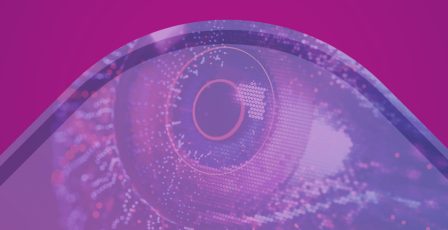Open Banking across the customer lifecycle
As consumer consented data continues to form an integral part of sustainable lending, Experian’s Becky Galvin reviews how Open Banking can be used across the customer lifecycle to ensure fair and accurate credit decisions
In our last blog, we reviewed the various forms of consumer consented data, including Open Banking, Experian Boost and Support Hub, which allow consumers to share the data they want, on their terms, in exchange for a clear need and shared value.
In this article, we will explore how Open Banking is being implemented across the customer lifecycle including Originations, Customer Management, and Pre-delinquency and Collections.
Open Banking in Originations
Open banking has been incorporated into eligibility journeys, where this is the case, the data is used in decisioning. For example, price comparators have sought to partner with lenders to capture Open Banking data to inform a customer’s eligibility for credit at the start of the credit journey and provide a better match between what a customer can truly afford and the credit available to deliver a win/win for the consumer and the lender.
Where lenders have incorporated Open Banking into their originations journey, the two main use cases seen are affordability assessment for higher affordability risk cases, generally used in a proportionate way and enhanced risk assessment. This additional data allows lenders to cherry pick from marginal declines to accept cases within the same risk appetite. Based on a number of unsecured lender portfolios, we have seen a 3% – 5% uplift in Gini across the full score range and 10% – 15% at the margin.
Affordability assessment generally looks at disposable income calculations coupled with risk insights, for example higher levels of indebtedness or increased overdraft usage. Other examples could include if a consumer is showing a heavy reliance on gambling, for example, percentage spent on gambling in relation to a customer’s income or those who have gambling in the top 3 of their most common transactions. These customers are more at risk of defaulting. Highly irregular transfers might indicate difficulty in maintaining the overdraft balance. Pay day loan income may indicate a customer might be struggling to make ends meet. The benefit of accessing this data through Open Banking as opposed to the bureau is the timeliness and granularity, with a capacity to reveal behaviour not seen in bureau or summarised current account data.
Interesting trends have been seen across different populations, for example, sub-prime customers showing different transactional behaviours like less consistent income streams and a move to switching shopping and sometimes even energy spend from current account to credit card. The use of Buy Now, Pay Later (BNPL) which might reveal responsible lending behaviour, or a dependency on multiple BNPL accounts to fund a customer’s lifestyle. The dependency on multiple incomes (jobs) to make ends meet or exposure to an employment sector that is more adversely affected by the downturn in the economy such as transport or hospitality.
Did you know...
Some lenders have replaced bank statements using Open Banking to digitise the mortgage application experience and improve their quality of customer service?
The Cost-of-Living crisis has caused many consumers to change their spending habits, and this can be seen in the Open Banking data. For example, greater reliance on savings and increased spend on gas and electricity and a reduction in spending on fashion. What has not been widely adopted yet but is an interesting area of development is not only understanding what is happening now but forecasting changes. Consumers share their Open Banking data, and it is categorised into different areas of spend, for instance groceries, utilities, transport. Economic data can be overlaid onto this, and inflation forecasts applied to each category and personalised inflation metrics created to understand future impact. So, for example, we can understand that the impact of transport cost inflation for someone that drives to work is greater than someone who works from home.
The more advanced lenders have used the Open Banking data to build better general expenditure models rather than relying on outdated ONS family spending survey data.
In an age when many of us interact with organisations online, it seems old-fashioned, out-dated, and unsecure to many customers, that lenders are still asking them to email or share paper-based copies of bank statements
Open Banking in Customer Management
Open Banking can be used in customer management to help assess fringe cases for further lending, for example marginal credit limit increase cases, or review of potential credit limit decreases. If further lending is required, then there is a value exchange in offering up this level of data.
Adoption of Open Banking within this area of the customer lifecycle is low. However, transactional information is widely used within banks and has been for many years, to understand behaviours of their current account and credit card customers.

A number of use cases exist in the utilities sector. In the water sector, Open Banking is being used to assess whether customers are eligible for social tariffs, removing the need for supply of bank statements and streamlining the process to minutes. In Energy, Open Banking is being used to enable customers to self-serve on their monthly payments which may include an aspect of debt. Customers within certain parameters can use a software solution to flex their monthly payments if they’re struggling to make ends meet. This helps energy companies manage their call volumes at peak times and helps customers avoid the pain or inconvenience of an intrusive chat.
Open Banking can play a key part in the management of ongoing conduct risk. The FCA’s latest Consumer Duty regulation requires lenders to monitor credit worthiness and affordability outcomes. Open Banking can track consistent behaviour and changes in patterns of behaviour and provides a vehicle to monitor changes in affordability to, not only meet the regulation but, manage customer interactions more appropriately. Open Banking’s capacity to provide timely and insight information on a customer’s financial status could be the solution that lenders are looking for to monitor and evidence a customer’s ongoing capacity to afford the lending.
Open Banking in Pre-Delinquency and Collections
Many lenders are using Open Banking within pre-delinquency and collections processes either as a stand-alone tool or more commonly through software solutions that automate payment plan management and collection strategies. Software solutions such as Aryza’s Debt Recover offer a simple user interface, that enables a consumer, to gain a clear understanding of their income, outgoings and credit commitments, along with their ongoing personalised affordability and vulnerability. Using Open Banking combined with bureau data, and asking the consumer simple questions, accurate data can be captured within minutes, with little or no reliance on contact centre agents. Customers benefit from not having to fill out lengthy income and expenditure and know the output will be more accurate. There is a large cohort of customers that like to transact digitally, at their convenience and without the embarrassment of talking to an agent. This streamlined data capture can automatically inform outcomes to the consumer, tailored to their individual needs, for example, affordable payment options.
Around three years ago the split of manual income and expenditure data capture to Open Banking was around 85% manual to 15% Open Banking; as of now the trends are much closer with a near 50-50 split, with a very clear upward trend in favour of Open Banking.
We have seen a real behavioural change in consumers in using Open Banking, as their awareness of the service has increased and confidence in the security of data exchange has grown.
Many have seen that the mere mention of using Open Banking in collections processes has led to improved kept rates as consumers sense lenders mean business!
How can we help you?
In summary, Open Banking adoption, whilst slower than originally anticipated does have a role to play to varying degrees across the customer lifecycle. The greatest level of adoption is seen in originations where the value exchange is the greatest.
However, use is also growing as customers use Open Banking to manage their financial lives including improved budgeting and automated payment plan management.










